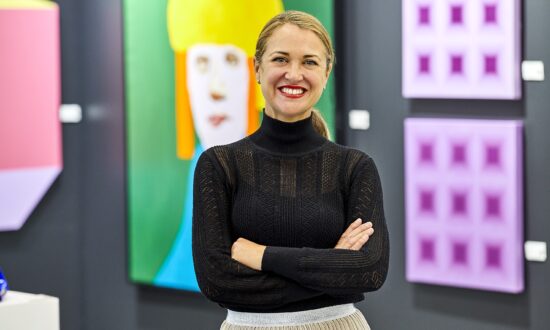This patinated terracotta sculpture is one of several different versions created in a variety of media – marble, bronze and terracotta – and was originally exhibited in Paris in 1869 with the title La Negresse, a name which was considered socially acceptable in 19th-century Europe but is no longer palatable in the 21st-century art world.
In 1867 Baron Haussmann – the man appointed by Napoleon III to undertake large-scale urban renewal projects across Paris – commissioned Carpeaux to create a new fountain for the Jardin Marco Polo in Paris as part of the redevelopment of the Avenue du Luxembourg, one of the great Beaux-Arts boulevards in Paris. Carpeaux’s Fontaine de l’Observatoire was finally completed in 1874 and represents the four parts of the world – Europe, Asia, Africa and the Americas – embodied by four female figures holding aloft the celestial globe. The figure representing Africa is the same model depicted in Why be born a slave! (Pourquoi naître esclave!), although she appears in a slightly different form.

Jean-Baptiste Carpeaux, Why be born a slave! (Pourquoi naître esclave!), 1868, Paris, terracotta, 61.0 x 46.0 x 23.0cm, Gift of William Bowmore AO OBE through the Art Gallery of South Australia Foundation 2003, AGSA.
AGSA’s version of this sculpture was issued as a more commercial venture and was the only one to have the more explicit title inscribed on its base – Pourquoi naître esclave.
Carpeaux’s work without doubt draws attention to the history of slavery of Africa’s peoples: while abolition had occurred in France some 20 years earlier, the United States Civil War had only ended in 1865 and slavery remained a much-debated topic.
The sculpture has become an iconic representation of slavery and the abolition movement around the world, yet from a 21st-century perspective it is recognised that his depiction retains a 19th-century colonial sensibility in its representation of women of colour as sexualised objects of desire.
Many people of African descent lived in Paris during the 19th century and there were many men and women of colour who became popular artists’ models. However, because of their cultural heritage and social status as artist models, the names and stories of these men and women have been lost to history, and it has only been in the last few years that cultural institutions have begun to shine light on these forgotten figures.
The patinated, porous surface of Why be born a slave has meant that over the years much surface dust and dirt has accumulated, which has affected the overall visual presence of this piece. After consultation with Artlab’s conservators, we decided to undertake comprehensive assessment and treatment which had not occurred since the work was acquired by AGSA in 2003 (and is very unlikely to have occurred when the work was in private collections).
Testing with traditional methods of dirt removal – rubber putty, wet swabs with various solvents – yielded limited results, and after consulting with international experts the conservator decided to trial using an Nd YAG laser, set to the lowest energy setting. Interestingly, this type of laser is commonly used in beauty-related skin treatments today. The laser was highly effective and lifted the areas of heaviest soiling without damaging the overall patina of the work, retaining the surface texture so that the artist’s original modelling is clearly visible.
This important sculpture, Why be born a slave, has now returned to display in the Melrose Wing of AGSA.
Tansy Curtin is curator of International Art Pre-1980 at the Art Gallery of South Australia. This article is part of an occasional series in which AGSA curators offer an insight into specific works or displays at the gallery.
Note: A marble version of Jean-Baptiste Carpeaux’s sculpture is currently the centrepiece of an exhibition at New York’s The Met titled Fictions of Emancipation: Carpeaux Recast.
Support local arts journalism
Your support will help us continue the important work of InReview in publishing free professional journalism that celebrates, interrogates and amplifies arts and culture in South Australia.
Donate Here




